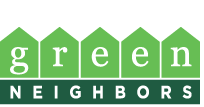Winter Honeysuckle
- Scientific Name: Lonicera fragrantissima
- Garden: Rain Garden
- Plant Type: Shrub
- Evergreen/Deciduous: Deciduous
- Sun/Shade Exposure: Full Sun to Part Shade
- Moisture Requirements: Moist/Well-Drained
Plant Information
Characteristics: Around 180 species of deciduous or evergreen shrubs and vines make up the Honeysuckle genus.
Leaves are opposite and are often fused, forming a disc. Flowers are often tubular forming a deep throat, attracting birds and bees, and are often fragrant. Seedy fruit follows flowers.
Culture: Honeysuckles are very adaptable, enjoying many soil types and varying pH with the exception being very wet boggy soil. They thrive in full sun to part shade. Hardiness varies depending on species.
Pruning: Pruning should happen directly after flowering. Boxleaf and privet honeysuckles can be sheared or shaped like hedge plants.
Problems: Few.
Cute white flowers with strong citrus fragrance bloom on bare branches in mid to late winter. Sort of a vine, sort of a shrub, the plant develops into a broad irregular tangled mass providing great cover for birds. Green leaves turn yellow-brown in fall and red fruits appear in summer. Best planted in a spot that is passed-by regularly in winter during bloom, but that can disappear into the background in summer.
Grows 6-10' x 6-10', sun to part shade, Z4
Data Source
www.xeraplants.comPlant Photos







